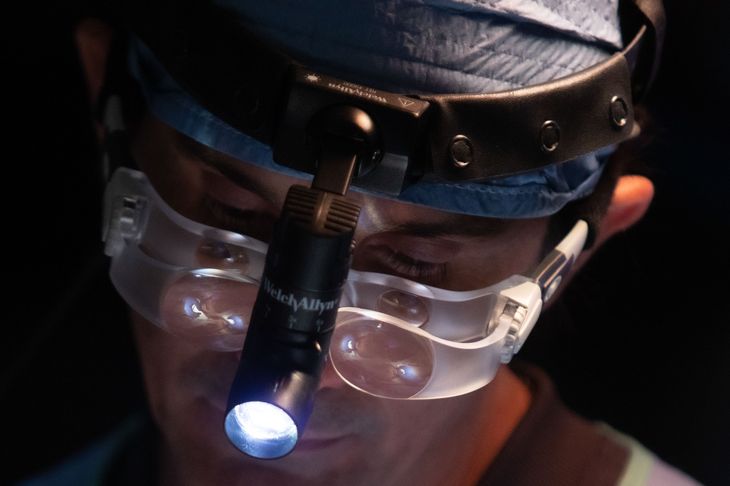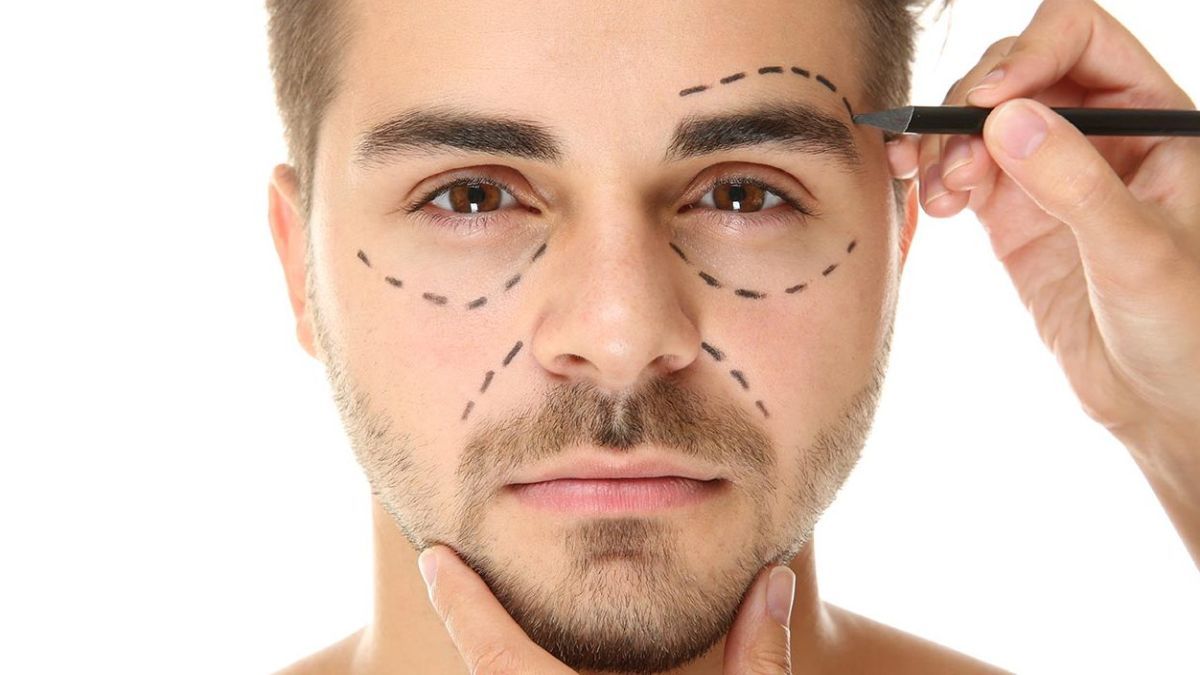WhatsApp Image 2023-10-12 at 09.21.54.jpeg
Plastic surgery can be restorative or aesthetic and you must go to a well-trained doctor to do it.
The big issue is that, today, social services are obliged to cover reconstructive surgeries and the payments are not so good, which is why many doctors choose to dedicate themselves to aesthetics and, at this point, a key element appears, the leg. of the business. “The majority would look for economic return and the economic return then is to do private aesthetic surgery,” explains the doctor.
What you need to know before going to surgery
This means that the supply of doctors is very broad, there is no support from a social work that guarantees the expertise of the surgeon and vouches for their credentials and it is not easy to choose or know where to start. And, in this sense, Corrales recommends that, Before entering an operating room and putting yourself in the hands of a professional, know the following information:
1. Background of the professional
The first thing to investigate is what the professional’s background is. In this sense, Corrales recommends looking for different channels and not relying solely, for example, on “seeing diplomas hanging in the office, which an ordinary person does not understand what they are” or simply Internet references. Thus, he recommends that we must look for different means that allow us to check the history of each surgeon. Information can be intertwined, for example, since we are putting our life in the hands of that person.
2. Pre-surgical studies
On the other hand, he points out that “the second important point has to do with the preparations regarding presurgical studies,” on the one hand. That is, ensuring that one is fit to undergo the surgery process. And, on the other hand, find out about the place where the surgery will be performed. “You have to look at which centers are authorized and make sure that the space in which it will be done is an authorized center” and has everything necessary for proper care.
3. Origin and quality of the materials to be used
On the other hand, Corrales states that “the case of Silvina Luna came to question what materials should be used in each type of intervention.” And the methacrylate that the doctor injected into her buttocks is not suitable to put inside the human body. So, something that must be asked is “what It is what you use, you use implants, you use an injectable, what you use and it is key to check as best as possible the traceability of what the doctor is implanting,” he said.
4. Post-operative follow-up
“The fourth point would be follow-up,” emphasizes the doctor. And it highlights the importance of making sure how monitoring is done and by whom. It is very important to know what it will be like after the intervention, what the controls will be like, who will carry them out and how often. It is also good to know the symptoms that may be common after surgery and which ones should draw our attention to consult in case they appear.
5. Doctor-patient relationship
Finally, for Corrales, the most important element of all is the doctor-patient relationship, which is key for the process to be positive. “It is important, beyond a doctor being technically perfect, to give room when choosing the surgeon to analyze what that relationship is like, that is, whether there is skin or not,” he believes.
image.png

As can be seen from what Corrales says, one would have to have gone through a lot of investigative stages before entering the operating room, which many do not comply with. And he warns that this is key because “anyone already presents themselves as the best plastic surgeon who does aesthetics, but then problems arise; it is not what is promoted on Instagram, obviously.”
The importance of consulting professionals in plastic surgery
At this point, he warns that social networks generated a big problem, “because everyone puts together their own resume.” Then it was filled with doctors who invented their titles, it was even filled with scientific societies. “It’s like I got together with two or three plastic surgeons and we founded the society of aesthetic surgeons and gave ourselves that name and then people don’t really know what the mother scientific society is,” warns Corrales, who points out that that is where everything is confused.
“Those who endorse the training of plastic surgeons in Argentina is the Argentine Society of Aesthetic and Reconstructive Plastic Surgery, which later has branches in the different provinces. For example, I also belong to the subsidiary of the Society of Plastic Surgery of Buenos Aires,” he emphasizes.
And he points out that on the Internet the only thing you see are the photos, which in most cases are retouched with Photoshop. “I have even seen that at scientific conferences, how can there not be that on the Web,” he says.
WhatsApp Image 2023-10-12 at 09.21.54 (1).jpeg

It is key that the chosen surgeon has the necessary training and equipment.
As a consequence of all this improvisation, he comments that, “In the hospital we see all the surgical problems that did not turn out as one thought they would” and he says that there are even doctors who are full of judgments who do not care in many cases. “The issue is that there is no punitive issue. In some cases, the title is removed, as we are seeing in the case of Lotocki,” he points out.
A big problem is that the justice processes are very long in Argentina and throughout the process the defendants continue practicing and many even maintain it afterwards. “In short, they close one office, open another and they remain there,” says Corrales.
Legislation: why professionals who are not plastic surgeons practice
Another key point is that, andIn Argentina, there is a gray area in the legislation that allows the doctor, once received, to perform any procedure. “The law always runs behind, because then later if there is a problem, or some unwanted result, one will have to explain the case of how one was trained and acquired the skills to do that.”. And that is why one does a residency, higher courses and all the training,” the surgeon criticizes regarding how the licensing system works in the country.
He warns that, under these circumstances, it is expected that, sooner or later, cases like Lotocki’s could happen. “So, what should be done is to correct the law so that aesthetic surgeries have to be performed by plastic surgeons, like neurosurgeries by neurosurgeons and trauma surgeries by traumatologists,” he says.
He emphasizes, in this sense, that “the poor communication of the scientific community is, to a large extent, what facilitates the appearance of ‘chantas’ because one cannot be self-taught.” Of course, it would be ideal for someone to corroborate that the doctor who performs surgery was trained for that.”
And, in this sense, Corrales says that there is a whole debate within the medical community, which suffers from a problem that is “medical intrusion.” What is it? “These are all specialties that, in some way, were attributed skills or knowledge to do facial aesthetics. For example, dentists now claim that they can also do treatments with hyaluronic acid because they studied facial anatomy,” he comments.
However, he is in favor of the fact that things have to be done by those who know, and a dentist may know a lot, but he should complete a career in surgery to be able to perform aesthetic procedures of this type.
A specialty that evolves
Likewise, in terms of cosmetic surgery, Corrales says that “there are always new techniques, there are techniques that are much less invasive than others and, for example, there is a paradigm shift in facial aesthetics, which is injectables.” However, there is also a dangerous belief for the patient because it states that “It seems like it’s just clicking and putting a filling and many people dare to do it.”
However, it is at that point that adverse results appear as a consequence of technical problems in the application of fillers or negative results due to poor aesthetic issues. “Not all doctors are trained in facial aesthetics, which has to do with harmonies, with relationships between the different structures of the face,” he warns.
“It’s a very interesting concept, because It’s not that only plastic surgeons are like the aesthetic police and we say ‘this is good, this is bad’, but there is a whole background, like the golden ratio, that indicates the ideal relationships between things. Leonardo Da Vinci had already talked about the golden ratio, that is very interesting and not everyone has all this information or is trained in this,” he says.
On the other hand, he comments, for example, that progress is now being made in a technique known as Deep Lifting, which involves going to the deepest planes to do a lifting and indicates that, “if one does not have a very developed technique and does not has very precise instruments to do it, the risk of complications is very high” and can lead to serious complications, facial paralysis, etc.
In short, Corrales explains that not everyone can perform surgery. “The plastic surgery career is very long because one has to do six years of medicine and then four years of general surgery. So, for those who take it seriously, you definitely cannot skip any of the steps for it to be effective, for it to have a good ending, for it to be effective,” he highlights. And he concludes with the warning that this type of interventions, due to the preparation required, they can never be cheap. “Be wary if it is cheap because some step has been skipped by whoever does it,” he recommends.
Source: Ambito
I am an author and journalist who has worked in the entertainment industry for over a decade. I currently work as a news editor at a major news website, and my focus is on covering the latest trends in entertainment. I also write occasional pieces for other outlets, and have authored two books about the entertainment industry.




